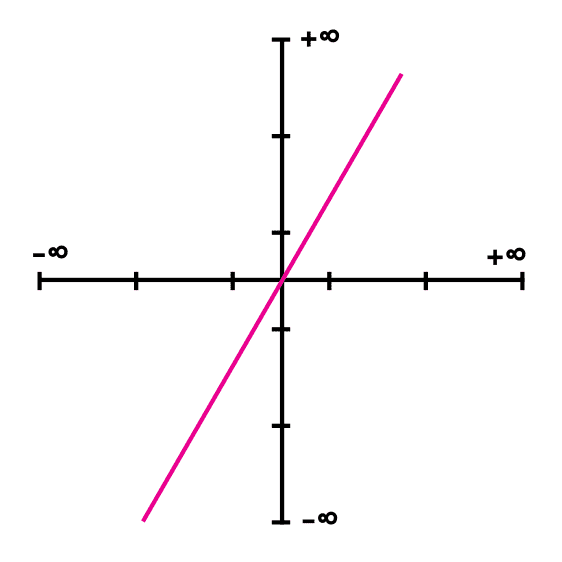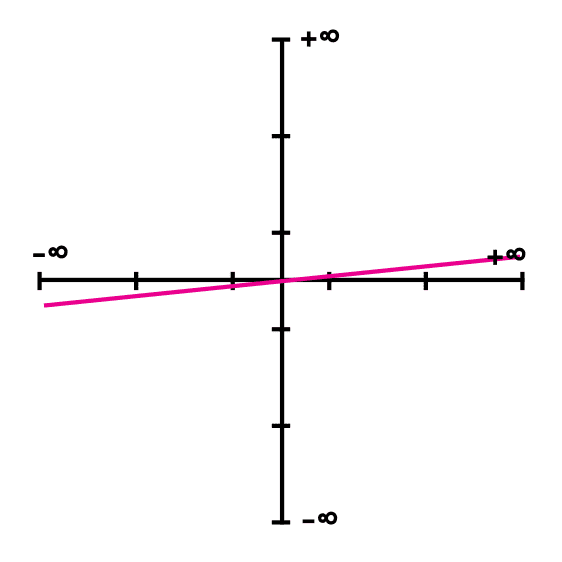Domain and range of a linear function
This article will be about Will be about the domain and range of the linear function, and how to prove it.
What is the domain and range of a linear function
A linear function is characterized because the graphic is a straight line with a certain slope, this means that is not totally horizontal line, instead this has an inclination degree with respect to the “x” axis, therefore, it does not matter how small or big the slope of the function is, this is always going to continue growing in both sides while the “x” values increases.
Once we understand the behavior of the linear function we can proceed to define the domain and range of a this type of functions. The short answer is that both, domain and range of any linear function are the real numbers, this in intervals ] -∞,+∞ [, this is like that because it does not matter the value “x” takes, this is always going to have a valid answer, for example in the function f(x)=3x+2 it does not matter how high or low the “x” value is, this is always going to give a valid answer, the domain in a function stops being the real numbers when there is a determined “x” value where the equation cannot be solved, but this never happens in linear functions.

In case of the range of a linear function, it is also the real numbers, because it does not matter how slow is the growth of the function, sooner or later it will go to infinite.
Example that demonstrate that the domain and range of a linear function
It is clear that this types of functions are the reals, so we are going to clarify that the range of this function are the Real numbers as well.
To begin we are going to demonstrate this with the following functions: f(x) = 100x, and f(x) = 0.01x.
To show how this two functions grow we are going to evaluate the function when “x” is 1, 10, 100 and 1000.
- First we evaluate the first function
- f(x) = 100x
- f(1) = 100(1)
- f(1) = 100
- f(10) = 100(10)
- f(10) = 1000
- f(100) = 100(100)
- f(100) = 10000
- f(1000) = 100(1000)
- f(1000) = 100000

- And now we evaluate the other function
- f(x) = 0.01x
- f(1) = 0.01(1)
- f(1) = 0.01
- f(10) = 0.01(10)
- f(10) = 0.1
- f(100) = 0.01(100)
- f(100) = 1
- f(1000) = 0.01(1000)
- f(1000) = 10

As we can see in the functions before the first function grows insanely faster than the second function, but this does not mean that the second function will not get to infinite, the second function f(x)=0.01x has to take a value of 1000 to barely reach 10, so if this function is graphed this would be almost a horizontal line, but even when it does not seem like that, the range at some point will point to infinite as well.
Related articles